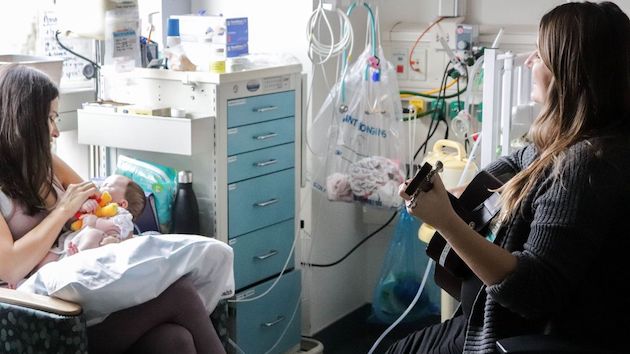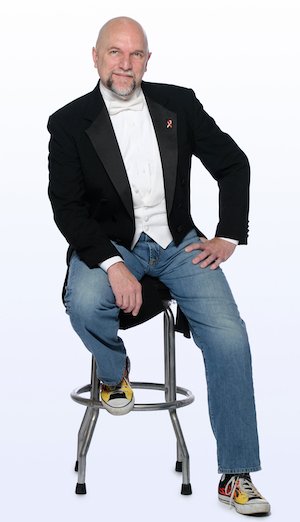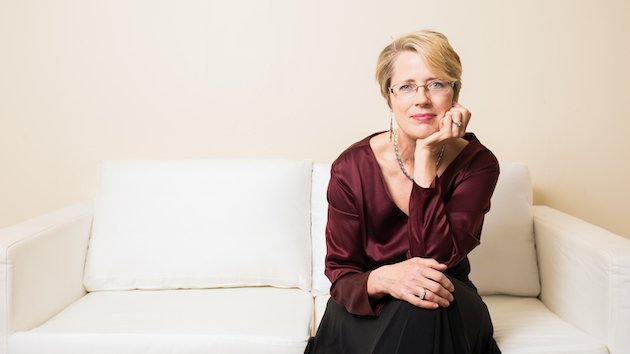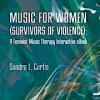
Jenna Bollard, music therapist at the UCLA Mattel Children’s Hospital, had always loved singing and performing, but she didn’t become aware of music’s healing power until she was a sophomore in high school and her grandfather, who had Alzheimer’s, was in the hospital comatose and started humming along when a song came on the radio. For Ian Wilkerson, founder of Bay Area Music Therapy, it was visiting a special-education class in high school to play music and sing with the students and seeing how much joy it brought them. And for Tim Seelig, now artistic director of the San Francisco Gay Men’s Chorus, it was in Dallas in 1987 when he saw a man with Kaposi’s sarcoma lesions sitting in the front row at choir practice.

“I’d been buried in the Baptist church, and I stupidly said, ‘What’s he doing at choir rehearsal?’” Seelig said. “My friend looked at me as if I had horns or something, and said, ‘This is what’s keeping him alive.’” Seelig was a performing opera singer before giving it up to be the choir director at the Turtle Creek Chorus in Dallas, Texas, for 20 years, then coming to San Francisco in 2010, calls this a watershed moment for him.
“I’ve conducted many, many choruses around the world and they are lifelines,” he said. “It’s not only healing — it is life giving.”
After his experience in high school, Wilkerson decided to go to Berklee College of Music, where he got a master’s in music therapy and songwriting.
The people he and the therapists in his practice work with have a whole range of emotional, physical, and psychological needs from autism to cerebral palsy to brain injuries to substance abuse to strokes and Parkinson’s. Wilkerson says the focus of their work is expression, creativity, and empowerment, and writing a song or playing an instrument access those as well as boosting morale. And music is healing for another reason, he says.
“It all revolves around having fun,” he said. “When you’re in a state of pleasure and joy, it optimizes learning and boosts your immune system.”
The science shows music acts on the brain differently than other activities, Wilkerson says. “Unlike with most other human functions, when you’re actively making music, the whole brain lights up and is all activated at the same time,” he said.
Western medicine saves people’s lives, Bollard says. What she tries to do in her work is improve the quality of their lives.
“As a music therapist, my role is to create an environment that’s more healing and remind people of their internal resources when the external world is full of stresses,” she said. “The environment in the hospital can be cold and sterile, and I enjoy being able to help people transport themselves.”
Bollard says music can make a real difference to the children who are in the hospital for months and their families, as well as to newborn infants. Evidence shows that music creates feel good hormones that help to combat pain, promote bonding and increase milk production, she says. She and her colleagues do things like helping mothers write lullabies to sing to their babies, teaching people to play instruments, and to meditate to music. They also use singing to help people learn to speak again, the same therapy former congresswoman Gabby Giffords used after she was shot in 2011.
Like Wilkerson, Bollard studied with speech pathologist and music therapist Kathleen Howland at the Berklee College of Music.
Howland says she loves seeing all the ways her students work with music, and she’s pleased to see how the science behind it has become accepted.
“The last five years, the velocity has just picked up. Before people thought it was entertainment,” she said. “I show my students a clip of Maria in The Sound of Music twirling while singing in the mountains, and I say, ‘This is what people think I do.’ Happiness is a happy byproduct of what we do. We wield this beautiful thing of music that engages the entire brain.”

Howland’s first job was working with people who were intellectually disabled and had medical issues.
“Most of them were nonambulatory and nonverbal, and music gave them a sense of control and dignity and agency in the world,” she said. “You see the effects of music over and over again in places like hospice and how it lessens pain in stroke patients. That’s why music education is so critical. It really gets my Irish up that it’s not taught in schools more, and I’m a Norwegian woman so I have to dig deep for that.”
Howland would like music therapy in all kinds of settings — such as prison and psychiatric wards, as she says it’s a way of people more quickly understanding their trauma and being able to let go of it. Since the pandemic has meant people can’t be together inside, particularly not opening their mouths to sing, Howland says therapists have done a great job of shifting to telehealth.
The SFGMC has also gone online. The singers took videos of themselves, and those were edited into a virtual choir performance, “Truly Brave,” dedicated to first responders. They got 200,000 views on YouTube, Seelig says, with another 100,000 on Facebook. The response inspired them to create a YouTube channel, SFGMC TV, where they have posted interviews with people like Jake Heggie, Chasten Buttigieg, and Billy Porter.
And Seelig says the community is still strong with many of the 275 choir members continuing to show up on Zoom every week. “We continued ‘rehearsal’,” he said. “And I’m using air quotes because you can’t sing together on Zoom. But they’re still showing up. I call it choir conversation. They’re hungry to see each other.”
Seelig has no doubts that singing in a choir is a type of music therapy.
“You come into a room completely vulnerable, and you allow yourself and your voice to blend into the sea around you,” he said. “The magic of choral singing is joining with other humans.”




